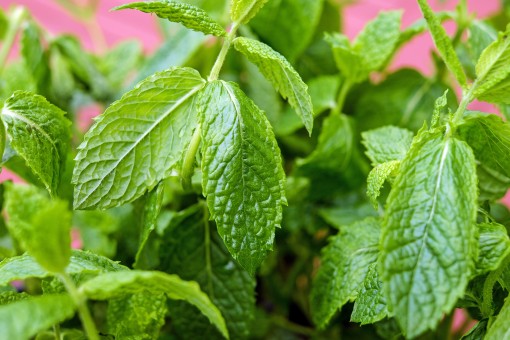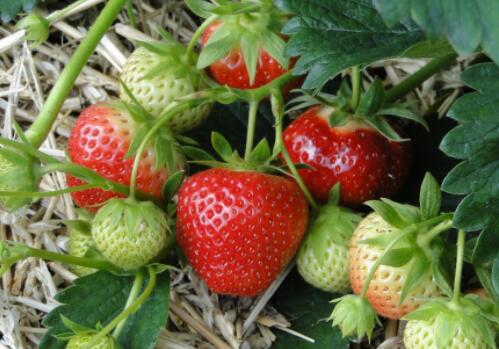When will cruciferous vegetables be planted and harvested? What is the yield per mu? How do you plant it? What are the technologies?
Green vegetables are also known as Chinese cabbage, rape, small rape. It is cultivated in the north and south provinces of China, especially in the Yangtze River Basin. The tender leaves of green vegetables are used for vegetables, which is one of the most common vegetables in China. When will the vegetables be planted and harvested? What is the yield per mu? How do you plant it? What are the technologies? It is learned from the Yunnan planting base that the petiole of green vegetables is thick and long, the green stalk is dark green, the powder stalk is grayish green, and there is a lot of wax powder. The plant is 70 cm high and the degree of development is 50 cm. The weight of a single plant is about 2.5 kg and the yield per mu is about 7000,000,000 kg.

When will the green vegetables be planted and harvested?
1. The planting season of green vegetables is generally from August to October, which can be planted every year, but it is better in autumn and winter, and it is suitable to be planted indoors in winter in the north.
two。 The harvest of seedling in open field in March is slower than that from late February to late March, that in greenhouse in April is slower than that from late March to early April, and that in May is slower than that from late April to early May. Remove the root with a kitchen knife, and the clean vegetables are on the market.
How do you grow green vegetables? What are the technologies?
First, plot selection: the cultivation of green green vegetables should choose deep, loose, fertile sandy loam or clay loam, convenient drainage and irrigation, the implementation of rotation land.
Second, sowing period: sowing at the right time is the key measure for disease prevention and high yield. The cultivation of small green vegetables can be sowed and harvested every year. It is cultivated as Chinese cabbage, sown from August to October and harvested from November to February of the following year.
Third, sowing method: green vegetables can be direct seeded or raised seedlings and transplanting. As a small green vegetable cultivation, the implementation of direct seeding, using wide border and high ridge sowing cultivation, the width of the border is 1.5ml 2 meters. It is suitable for cultivation, direct seeding and transplanting of Chinese cabbage. Direct seeding adopts wide border, high ridge and multi-row hole sowing, sowing about 10 seeds in each hole, covering with fine soil after sowing, using about 200 grams per mu. When the seedlings were raised and transplanted, the seedling age was about 25 meters and 30 days, and it was planted when there were 4 colors and 5 leaves.
IV. Field management:
1. Seedling and transplanting: no matter direct seeding or seedling transplanting, seedling transplanting should be carried out. When the seedlings had 2 leaves, the seedlings were interspersed for the first time, the weak seedlings and over-dense seedlings were removed, the large seedlings and strong seedlings were retained, and the deficiency of direct seeding was checked and replanted in time. 3When the seedlings were planted for the second time with 4 leaves and 5 leaves, the seedlings were fixed by direct seeding and transplanting, and the row spacing was 1.1 ~ 1.2 feet, 1.2 ~ 1.3 feet, and about 4000 green vegetables per mu. The planting should be carried out after 4 o'clock in the afternoon and watered with enough root water.
2. Watering: watering at seedling stage after each seedling, according to the degree of dryness and wetness of the plot, watering every 3 miles and 4 days in sunny days is the principle. When transplanting green vegetables in the field, they should be watered with enough water to fix their roots, and then watered appropriately according to the seedling condition and the dry and wet degree of the plot.
3. Fertilization: for the cultivation of small green vegetables, 2500 kg of human feces and urine, 10 kg of common calcium and 10 kg of potassium sulfate were applied per mu at seedling stage. For the cultivation of greengrocery in the field, nitrogen fertilizer is the main fertilizer, phosphorus and potassium fertilizer is added appropriately, and it can be applied after planting and surviving, generally, it can be topdressing 2Mel 3 times. The times and concentration of fertilization depend on the condition of the seedling. After the first topdressing, 40 kg urea is applied with water per mu, or clear manure water with water. After appropriate application of phosphorus and potassium fertilizer according to the growth trend, root topdressing can be applied in ponds, or foliar spraying can be used. If sowing in early autumn, the temperature in the early stage is high and the growth is fast, so it is necessary to topdressing in time to enter the rosette stage in order to facilitate the growth of the edible part; for those sown in late autumn, in the colder areas, it is not suitable to apply more fertilizer before spring, otherwise it is easy to be damaged by freezing in overwinter. after spring, it should be watered and fertilized in time to make vegetative growth exuberant and improve yield and quality. When used as pickles, stop watering and topdressing about half a month before harvest to avoid excessive water content, increase the fiber content of green vegetables and improve the processing quality.
4. Cultivate the soil in the middle ploughing: ploughing the soil twice in the whole growing period. After the second direct seeding, the seedlings were hoed shallowly, and the seedlings were ploughed 5cm deep and 6cm deep. After transplanting seedlings and transplanting green vegetables in the field, after the transplanting survived, the first shallow hoe was carried out, and the deep ploughing was 5cm and 6cm before entering the rosette stage.
5. Pest control:
(1) Grass damage: make use of free time to manually pull out weeds in time.
(2) Disease: ① quenching disease: it is the main disease in seedling stage. Pay attention to drainage, appropriate sparse sowing, and time seedling and fixed seedling. At the initial stage of the disease, 3% oxomalaxyl 800x liquid is sprayed for 2-3 times. ② white spot disease: mainly harms leaves, at the initial stage of the disease, use 50% thiophanate methyl 500 times liquid or 50% carbendazim 500 times spray. ③ soft rot, the initial stage of the disease with 72% agricultural lincomycin 1500 liquid spray, or 5% Chun Lei mycin 800 liquid spray, the disease site should be sprayed through. ④ virus disease: at the initial stage of the disease, 7.5% phytoxianling 50 ml and 50 kg water can be used, or 20% virus A wettable powder 50 ml 60 g water spray can be used. It can also be sprayed with 15% non-fungus carcass 25 ml and 50 kg water. ⑤ root swelling disease: 200000 g chloronitroclonitroclopentum wettable powder 2000m / mu and 50% fine soil mixed into medicinal soil, ditch application or hole application before sowing; you can also use 75% chloronitroclonitro wettable powder 800x solution, or 50% methyl thiophanate wettable powder 500x solution, or 75% chlorothalonil wettable powder 500x solution to irrigate the root, and each plant is irrigated with 0.3ml / mu solution.
(3) pests: ① beet armyworm, Plutella xylostella, Plutella xylostella: 50-60 grams of Bacillus thuringiensis wettable powder and 50 kg water were sprayed evenly in the damage period. You can also spray 2.5% fish carcass oil 50 ml with 50 kg water or 0.3% azadirachtin EC 50 ml with 50 kg water. ② vegetable aphid: spray evenly with 20-30 grams of 20-30 grams of imidacloprid wettable powder and 50 kilograms of water. Can also be 2% matrine water agent 20-25 grams evenly sprayed with water.
6. Harvest: when used as pickles, it is required to be fully mature, the outer leaves turn yellow, and some even need moss before they can be harvested. At this time, the pickles harvested and processed have good color, high cellulose content and storage resistance. The specific harvest time should be combined with the growth of green vegetables and the acquisition time of the purchasing company.
Time: 2019-03-15 Click:
- Prev

What kind of Yindan mint is good? When will you plant it? When will it be picked? How do you plant it?
Peppermint, also known as Yindan grass and night incense, is a common Labiatae plant in the south of the Yangtze River. it is widely planted because it is both edible and medicinal.
- Next

What is the cost and profit of planting one mu of greenhouse strawberries? In which month is the best survival rate of transplanting? What are the planting methods?
Strawberry is one of the most popular fruits, it tastes delicious, has high nutritional value, contains a variety of nutrients, and has health benefits. Growing strawberries has also become a rich project in many areas. What about the cost and profit of growing one mu of greenhouse strawberries? In which month is the best survival rate of transplanting? What are the planting methods?
Related
- Fuxing push coffee new agricultural production and marketing class: lack of small-scale processing plants
- Jujube rice field leisure farm deep ploughing Yilan for five years to create a space for organic food and play
- Nongyu Farm-A trial of organic papaya for brave women with advanced technology
- Four points for attention in the prevention and control of diseases and insect pests of edible fungi
- How to add nutrient solution to Edible Fungi
- Is there any good way to control edible fungus mites?
- Open Inoculation Technology of Edible Fungi
- Is there any clever way to use fertilizer for edible fungus in winter?
- What agents are used to kill the pathogens of edible fungi in the mushroom shed?
- Rapid drying of Edible Fungi

